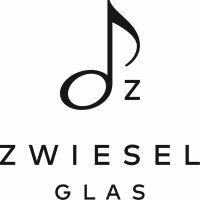About IWC Sake competition
Category to enter (カテゴリーについて)
Rules of Entry (エントリー規定とサンプル出品について)
Shipping Sake (サンプル酒の発送について)
Judging and Awards (審査とアワード)
Judges(審査員の紹介)
Discovery Tasting (ディスカバリー・テイスティングの説明)
醸造年と酒造年度について
IWCでは従来、ワインのヴィンテージに倣い、SAKEが醸造された年を酒造年度としてエントリーを受け付けてきました。しかし、日本酒は酒造期間が年をまたぐことが多いため、2023年のIWC審査からは日本の現行の区切り方と同じ「7月1日~翌年6月30日」を酒造年度の単位とします。
例:
2022年7月1日~2023年6月30日 酒造年度は2022年
2021年7月1日~2022年6月30日 酒造年度は2021年
2020年7月1日~2021年6月30日 酒造年度は2020年
IWCと古酒カテゴリー
IWCは、消費者がSAKEについて理解を深め、明確なカテゴリーのもとでより気軽にSAKEを購入できるようになってほしいと願っています。古酒カテゴリーは幅広く、様々なスタイルのSAKEを含みます。そこで、審査の合理性やバイヤーに対する明確化も考慮し、カテゴリー内に基準を設けることにしました。
古酒カテゴリーを審査段階で以下の2つに振り分けて審査を行います。
1.Amber Style: 酸化熟成が進み、黄色から琥珀色に着色している。貯蔵期間(上槽から出荷まで)は3年以上。貯蔵方法(容器、温度)は問わない。自然な熟成タイプ。
2. Mature Style: 酸化熟成が進みにくいように貯蔵温度や貯蔵方法を工夫し、蔵内で1年以上熟成させてから出荷。色合いも褐変化をあまりしていないクリアに近いタイプ。
上記はいずれも古酒カテゴリーに分類されますが、タイプ別に試飲を行い、古酒カテゴリーのトロフィー受賞を決める審査の段階で統合します。
各セクションの要件は以下の通りです:
1. Amber Style:満3年以上にわたり、常温熟成させた主に黄色~琥珀色の液色となったSAKE。
2. Mature Style:液色が透明に近く、低温(定温)熟成されたSAKE。
熟成期間は満1年以上を満たしていれば、古酒カテゴリーにエントリー可能。
熟成期間は長くても認められる。
エントリーする皆様には以下の情報を追加で確認します:
酒造年度(醸造年と酒造年度の説明を参照)の確認
熟成温度の確認
1. 低温/定温貯蔵
2. 常温熟成
3. 両方(例:タンクでは常温熟成、瓶詰後に低温熟成など)
IWCはこれらの項目を考慮に入れて審査を行います。
Vintages and Brewing seasons
The IWC has always used ‘Vintages’ i.e. the year it was made. Sake, unlike wine, can be brewed over a longer period, so from IWC 2023 will adopt the brewing season from 1 July to 30 June as a brewing year.
Example:
JUL2022-JUN2023 Brewing Year 2022
JUL2021-JUN2022 BY2021
JUL2020-JUN2021 BY2020 and so on…
IWC and the Koshu Category
As you know the IWC believes making Sake easy for consumers to understand and buy without confusion. Koshu is a broad category with lots of different styles, so we have decided to set some criteria within the category to make it easier to judge and also easier for buyers to identify.
The Koshu category will be split into two sections as follows:
1. Koshu, which the IWC regards as the amber style, oxidised or coloured.
2. Aged Sake – This generally will be clear and look like fresh sake, but also could be quite old being kept under colder/constant temperatures and less oxidised.
These will be still identified in the Koshu Category, but will be tasted separately from each other until the Trophy tasting, where will we look for the Koshu Trophy, i.e. the best in Category.
The sections will be identified as follows:
1. Koshu – Must be minimum of 3 years or older, be yellow to amber in colour and generally aged in a natural ambient temperature.
2. Aged Sake – Can be 1 year old or older. Generally stored at colder/constant temperatures. Can be stored for many years and be very old.
We are asking brewers for some more information as follows:
Identify the year of production (see Vintage’s and brewing seasons for explanation)
Identify the storage temperature
1. Low/Constant temperature storage
2. Ambient
3. Both (i.e from ambient in tank to cold storage in bottle)
The IWC will then flight these for judging accordingly.
Category to enter (カテゴリーについて)
Rules of Entry (エントリー規定とサンプル出品について)
Shipping Sake (サンプル酒の発送について)
Judging and Awards (審査とアワード)
Judges(審査員の紹介)
Discovery Tasting (ディスカバリー・テイスティングの説明)
醸造年と酒造年度について
IWCでは従来、ワインのヴィンテージに倣い、SAKEが醸造された年を酒造年度としてエントリーを受け付けてきました。しかし、日本酒は酒造期間が年をまたぐことが多いため、2023年のIWC審査からは日本の現行の区切り方と同じ「7月1日~翌年6月30日」を酒造年度の単位とします。
例:
2022年7月1日~2023年6月30日 酒造年度は2022年
2021年7月1日~2022年6月30日 酒造年度は2021年
2020年7月1日~2021年6月30日 酒造年度は2020年
IWCと古酒カテゴリー
IWCは、消費者がSAKEについて理解を深め、明確なカテゴリーのもとでより気軽にSAKEを購入できるようになってほしいと願っています。古酒カテゴリーは幅広く、様々なスタイルのSAKEを含みます。そこで、審査の合理性やバイヤーに対する明確化も考慮し、カテゴリー内に基準を設けることにしました。
古酒カテゴリーを審査段階で以下の2つに振り分けて審査を行います。
1.Amber Style: 酸化熟成が進み、黄色から琥珀色に着色している。貯蔵期間(上槽から出荷まで)は3年以上。貯蔵方法(容器、温度)は問わない。自然な熟成タイプ。
2. Mature Style: 酸化熟成が進みにくいように貯蔵温度や貯蔵方法を工夫し、蔵内で1年以上熟成させてから出荷。色合いも褐変化をあまりしていないクリアに近いタイプ。
上記はいずれも古酒カテゴリーに分類されますが、タイプ別に試飲を行い、古酒カテゴリーのトロフィー受賞を決める審査の段階で統合します。
各セクションの要件は以下の通りです:
1. Amber Style:満3年以上にわたり、常温熟成させた主に黄色~琥珀色の液色となったSAKE。
2. Mature Style:液色が透明に近く、低温(定温)熟成されたSAKE。
熟成期間は満1年以上を満たしていれば、古酒カテゴリーにエントリー可能。
熟成期間は長くても認められる。
エントリーする皆様には以下の情報を追加で確認します:
酒造年度(醸造年と酒造年度の説明を参照)の確認
熟成温度の確認
1. 低温/定温貯蔵
2. 常温熟成
3. 両方(例:タンクでは常温熟成、瓶詰後に低温熟成など)
IWCはこれらの項目を考慮に入れて審査を行います。
Vintages and Brewing seasons
The IWC has always used ‘Vintages’ i.e. the year it was made. Sake, unlike wine, can be brewed over a longer period, so from IWC 2023 will adopt the brewing season from 1 July to 30 June as a brewing year.
Example:
JUL2022-JUN2023 Brewing Year 2022
JUL2021-JUN2022 BY2021
JUL2020-JUN2021 BY2020 and so on…
IWC and the Koshu Category
As you know the IWC believes making Sake easy for consumers to understand and buy without confusion. Koshu is a broad category with lots of different styles, so we have decided to set some criteria within the category to make it easier to judge and also easier for buyers to identify.
The Koshu category will be split into two sections as follows:
1. Koshu, which the IWC regards as the amber style, oxidised or coloured.
2. Aged Sake – This generally will be clear and look like fresh sake, but also could be quite old being kept under colder/constant temperatures and less oxidised.
These will be still identified in the Koshu Category, but will be tasted separately from each other until the Trophy tasting, where will we look for the Koshu Trophy, i.e. the best in Category.
The sections will be identified as follows:
1. Koshu – Must be minimum of 3 years or older, be yellow to amber in colour and generally aged in a natural ambient temperature.
2. Aged Sake – Can be 1 year old or older. Generally stored at colder/constant temperatures. Can be stored for many years and be very old.
We are asking brewers for some more information as follows:
Identify the year of production (see Vintage’s and brewing seasons for explanation)
Identify the storage temperature
1. Low/Constant temperature storage
2. Ambient
3. Both (i.e from ambient in tank to cold storage in bottle)
The IWC will then flight these for judging accordingly.

 English
English French
French





.png)








